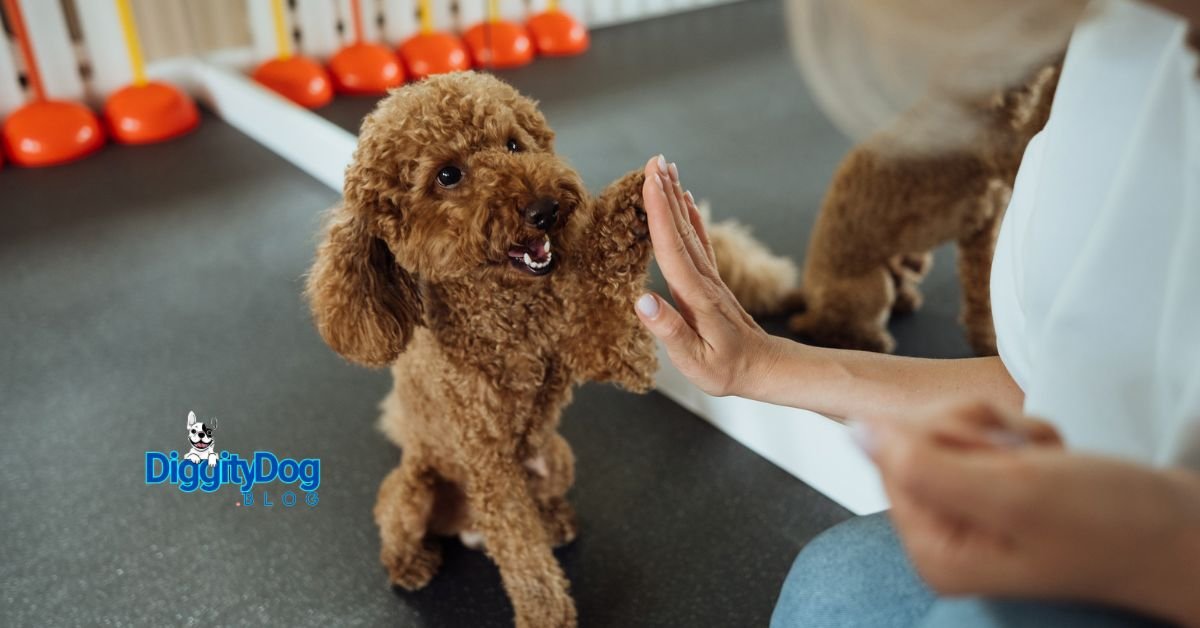Pets, like our canine friends, need careful training and socialization. This helps them become good family members. Whether you have a Shiba Inu or another breed, teaching them well is key. Using training tips for a well-behaved pet, positive reinforcement techniques, and obedience training methods will make your pet a joy to have around.
Key Takeaways
- Early training and socialization are essential for Shiba Inus and other breeds to curb stubborn tendencies.
- Positive reinforcement techniques, such as rewarding good behavior, are more effective than punishment-based methods.
- Establishing a consistent training schedule and setting realistic goals can help your pet learn quickly and retain lessons.
- Incorporating fun activities and games into training sessions can make the process engaging for both you and your pet.
- Seeking professional help from a certified trainer or behaviorist may be necessary for addressing complex behavioral issues.
Understanding the Importance of Pet Training
Proper pet training is essential for responsible pet ownership. It helps manage their behavior and strengthens your bond. Teaching obedience and consistent commands makes your pet well-behaved and adaptable.
Why Training Matters for Pets
Training your pet has many benefits for their well-being and your relationship. It prevents bad behaviors like barking, chewing, or aggression. It also teaches them to follow commands like “sit,” “stay,” and “come,” keeping them safe.
The Benefits of a Well-Trained Pet
- Easier to manage and control in various situations
- Less likely to develop anxiety or aggressive behaviors
- Able to enjoy more freedom and social interactions
- Mentally stimulated, which helps prevent boredom-related destructive behaviors
Investing time in obedience training and managing behavior makes a well-behaved companion. Consistent training helps your pet understand what’s expected. This creates a harmonious relationship with your pet.
Setting Realistic Training Goals
Starting pet training requires setting goals that match your pet’s age, personality, and skills. Clear, reachable goals help you bond with your pet and see them grow. This growth is in their behavior and skills.
Short-Term vs. Long-Term Goals
Short-term goals might be teaching basic commands like “sit,” “stay,” or “come.” These skills show your pet’s obedience and help build trust. They also start the routine of consistent training.
Long-term goals could be more complex, like walking calmly on a leash or solving specific behavior problems.
Adjusting Goals Based on Your Pet’s Age
- Puppies and kittens need short, frequent training sessions. They have short attention spans. Focus on making training positive and rewarding.
- Adult pets do better with longer, more detailed training sessions. These sessions challenge them mentally and physically. Adjust your goals to address their needs and improve their skills.
- Senior pets might need a different training approach. This is because of physical or mental changes. Stay patient and positive to keep them engaged and build trust.
For any pet, the secret to good training is setting realistic goals and being flexible. Adapt to your pet’s needs and celebrate small wins. This way, you build a strong bond and help your pet succeed.
Choosing the Right Training Methods
Training your pet is all about positive reinforcement. This method uses treats, praise, and toys to reward good behavior. It helps your pet learn by linking positive experiences to the actions you want.
Positive Reinforcement Techniques
Positive reinforcement builds a strong bond with your pet. It rewards them right after they do something good, like sitting. You can use treats, praise, or toys to show your approval.
By doing this often, you can teach your pet quickly and well.
Clicker Training Basics
Clicker training is a great way to use positive reinforcement. It uses a device that makes a “click” sound followed by a treat. This click tells your pet they did something right.
It’s great for teaching complex behaviors because it’s clear and fast.
Avoiding Punishment-Based Methods
Stay away from punishment-based training. It can make pets scared, anxious, or even aggressive. Yelling or physical correction can hurt your bond and make training harder.
Instead, focus on rewarding good behavior and setting your pet up for success.
Training a pet, especially a Shiba Inu, takes patience and consistency. Positive reinforcement and trust are the keys to a well-behaved and confident pet.
Creating a Training Schedule
Creating a regular training plan is vital for teaching your pet well. It’s important for all family members to use the same commands. This builds trust and helps your pet behave better. For dogs like Shiba Inus, short, regular training works better than long sessions.
Building Consistency in Training
Try to have 5-10 minute training sessions, 2-3 times a day. This keeps your pet focused and interested. Pick times when your pet is ready to learn, like after resting or before eating.
Scheduling Sessions for Optimal Learning
Training consistently is crucial. Make sure everyone in the family uses the same commands. This helps your pet learn quickly and builds trust.
Keeping Training Short and Engaging
Make training fun by adding play and changing commands. This keeps your pet excited about learning. By following routines, using the same commands, and building trust, you’ll have a well-behaved pet.
| Training Session Duration | Recommended Frequency | Optimal Timing |
|---|---|---|
| 5-10 minutes | 2-3 times per day | After rest, before meals |
Essential Commands Every Pet Should Learn
Obedience training is key to having a well-behaved pet. It takes time and patience, but learning a few basic commands can change everything. Let’s look at the top three commands: sit, stay, and come.
The ‘Sit’ Command
The ‘sit’ command is a basic skill in obedience training. Use treats or praise to teach your pet to sit. This command shows who’s in charge and helps with daily tasks, like saying hello to guests or waiting for food.
The ‘Stay’ Command
The ‘stay’ command builds on ‘sit’. It teaches your pet to stay put until you say it’s okay. Use treats and praise to help them learn. Start with short times and then increase it, making sure they understand what you want.
The ‘Come’ Command
The ‘come’ command is vital for your pet’s safety and your peace of mind. Practice it in different places, using treats to make it rewarding. It’s important to be consistent, so your pet always comes when called, no matter what they’re doing.
Teaching these essential commands will make your pet more obedient and responsive. With consistent commands and positive reinforcement techniques, you can create a strong bond with your pet. This foundation of obedience training methods will last for many years.
Socializing Your Pet
Proper socialization is key to managing animal behavior and building trust. It’s important to expose your pet to many people, animals, and places early. This helps them become well-adjusted and confident. Shiba Inus, for example, can be fearful or aggressive if not socialized well.
The Importance of Socialization
Socialization teaches pets to interact positively with their world. By introducing them to new things, you build a strong trust and positive reinforcement techniques foundation. This improves their behavior and makes them feel secure in different situations.
How to Properly Introduce Your Pet to New Environments
- Start socialization early, during the critical period of 7 to 16 weeks for puppies.
- Use treats and praise to create positive associations with new people, animals, and places.
- Attend puppy socialization classes or organize playdates with friendly, vaccinated dogs.
- Gradually expose your pet to different sounds, textures, and situations to build their confidence.
- Monitor interactions closely and respect your pet’s comfort level, never forcing them into overwhelming situations.
By following these managing animal behavior and building trust strategies, you can help your pet develop the social skills and confidence they need to thrive in a variety of environments. Remember, patience and a positive approach are key to successful pet socialization.
Dealing with Common Behavioral Issues
Dealing with pet behavior can be tough for owners. It’s important to understand why pets act out. By using positive training, you can make your pet happy and well-behaved.
Understanding Aggression and Fear
Pets may act aggressively or fearful due to genetics, past experiences, and environment. It’s key to find out what scares or angers them. Then, use slow exposure and rewards to help them feel safer and more confident.
Biting and Chewing Concerns
Young dogs often chew on things they shouldn’t. Give them chew toys and distract them from bad choices. Reward them for calm behavior to teach them what’s right.
Managing Excessive Barking
Too much barking can be annoying. Teach a “quiet” command and praise them when they’re silent. Also, make sure they’re active and mentally stimulated to avoid boredom.
If you’re having trouble with these issues, get help from a professional. They can create a training plan that fits your pet’s needs.
The Role of Patience in Pet Training
Patience is crucial when training your pet. It helps build trust and ensures your pet learns well. Whether your pet is independent or eager, staying calm is key.
Maintaining a Calm Demeanor
It’s normal to feel frustrated when progress is slow. But, staying patient and calm is vital. This creates a safe space for your pet to learn.
When you’re calm, you help build building trust with your pet. They become more open to your consistent commands.
Celebrating Small Wins
Positive reinforcement is a strong tool in training. Celebrating small achievements keeps your pet motivated. It makes learning fun and rewarding.
Every pet learns differently and at their own pace. With patience and consistency, you can help your pet become a well-trained friend.
Engaging in Fun Training Activities
Adding games and toys to your pet’s training makes learning fun and rewarding. Reward-based training strategies and positive reinforcement techniques help teach good behaviors. They also help build trust with your pet.
Incorporating Games into Training
Hide-and-seek games are a great way to keep your pet engaged. Hide treats around the house or yard. This encourages your pet to use their hunting skills to find the treats.
This activity not only teaches recall commands but also keeps their mind sharp.
Using Toys to Enhance Learning
Puzzle toys filled with treats challenge your pet’s problem-solving skills. As they figure out how to get the treats, they learn patience and focus. For energetic breeds like Shiba Inus, a backyard agility course is both fun and educational.
Change up the toys you use to keep training sessions exciting. Try different feeding methods like slow-feeder bowls or food-dispensing toys. These activities teach new commands and strengthen your bond with your pet.
When to Seek Professional Help
Many pet owners can train their animals on their own. But, some problems need a pro’s help. Issues like aggression, severe anxiety, or ongoing training issues might mean it’s time to get expert advice. This is especially true for breeds like Shiba Inus, where a breed-specific trainer can offer the best guidance.
Signs Your Pet Needs Expert Training
If your pet shows concerning behaviors, like biting, too much barking, or not listening, it’s time to get help. A professional trainer or behaviorist can give you strategies for these tough issues. They can help you and your pet have a better relationship.
Finding a Certified Trainer or Behaviorist
When looking for professional help, find certified trainers or behaviorists with experience in your pet’s issues. Check their credentials, ask for references, and make sure they have a good success record. A qualified expert can teach you obedience training methods, managing animal behavior, and consistent commands. They can help you and your pet become closer and happier together.
FAQ
What are the key training tips for a well-behaved pet?
To train your pet well, use positive reinforcement and consistent commands. Trust is built through patient and engaging sessions. Socialization, addressing issues, and professional help when needed are also key.
Why is pet training important?
Training pets strengthens the bond between owners and animals. It prevents behavioral problems and ensures pets can safely interact. Well-trained pets are easier to manage and enjoy more freedom and social interactions.
How do I set realistic training goals for my pet?
Set both short-term and long-term goals for your pet. Adjust goals based on your pet’s age. Puppies and kittens need more frequent, shorter sessions than adult animals.
What are the best training methods for pets?
Positive reinforcement is the best method. Use treats, praise, and toys as rewards. Avoid punishment, as it can cause fear and anxiety in pets.
How do I establish a consistent training routine?
Consistency is key. Schedule short, frequent sessions, 5-10 minutes, 2-3 times a day. Ensure all family members use the same commands and expectations.
What are the essential commands every pet should learn?
Teach “Sit,” “Stay,” and “Come” using positive reinforcement. Reward successful responses with treats, praise, or play.
Why is socialization important for pets?
Socialization helps pets become well-adjusted, especially for breeds like Shiba Inus. Early and continued exposure to various environments prevents fear and aggression, building confidence.
How do I address common behavioral issues in my pet?
Understand the root cause of issues like aggression or fear. Use positive reinforcement to encourage better behaviors. Desensitization is also key. If problems persist, seek professional help.
What role does patience play in pet training?
Patience is crucial, especially with independent breeds like Shiba Inus. Stay calm, celebrate small victories, and remember each animal learns at its own pace. Patient training builds trust and strengthens the bond.
How can I make training more engaging for my pet?
Make training fun by using games and toys. Hide-and-seek games with treats can reinforce recall commands. Puzzle toys or food-dispensing toys stimulate problem-solving skills.
When should I seek professional help for my pet’s training?
Seek professional help for aggressive behavior, severe anxiety, or persistent training challenges. Certified trainers or behaviorists can provide personalized strategies for a harmonious relationship.
Source Links
- 25 best manga you can read right now – https://thenexus.one/en/25-best-manga-you-can-read-right-now/
- Development of a Forced-Choice Personality Inventory via Thurstonian Item Response Theory (TIRT) – https://www.mdpi.com/2076-328X/14/12/1118
- Using AI Agents to Create Customized Customer Experiences – https://www.analyticsvidhya.com/blog/2024/11/customized-customer-experiences/
- Automated Pipeline for Robust Cat Activity Detection Based on Deep Learning and Wearable Sensor Data – https://www.mdpi.com/1424-8220/24/23/7436
- The Ultimate Guide to Pet Nutrition: What Every Pet Owner Should Know – https://vocal.media/petlife/the-ultimate-guide-to-pet-nutrition-what-every-pet-owner-should-know
- Securing your online cart – https://showme.missouri.edu/2024/securing-your-online-cart/
- Hospital dogs provide calm and comfort for health care providers and patients in need – https://www.cpr.org/2024/11/21/colorado-hospital-dogs-provide-hope-joy-for-patients-doctors-nurses/
- Book 4: Chapter 62 – Like Some Sociopathic Kid – Accidental Champion: A LitRPG Apocalypse Tower Climber (Book 1 Amazon Release on June 25) – https://www.royalroad.com/fiction/70004/accidental-champion-a-litrpg-apocalypse-tower/chapter/1913946/book-4-chapter-62-like-some-sociopathic-kid
- 15 Proud Moments Dogs Give Us That Make Our Hearts Soar – https://iheartdogs.com/things-dogs-do-that-make-us-proud/?utm_source=rss&utm_medium=rss&utm_campaign=things-dogs-do-that-make-us-proud
- Shiba Inu Care Guide: Essential Tips for Happy, Healthy Pups – https://citizenshipper.com/blog/shiba-inu-care-guide-essential-tips-for-happy-healthy-pups/
- Socializing Your Puppy or Adult Dog To Get Along With The World – https://www.yourpurebredpuppy.com/training/articles/dog-socializing.html
- Thank Dog! Why We’re Grateful for Our Pets – https://www.wfmz.com/online_features/pets/thank-dog-why-were-grateful-for-our-pets/article_93458bb0-5af2-5354-bbcc-579b8cc3d4a9.html
- VP Harris Bids Farewell to Howard University Crowd, Urges Supporters to Keep Fighting for America – https://www.postnewsgroup.com/vp-harris-bids-farewell-to-howard-university-crowd-urges-supporters-to-keep-fighting-for-america/
- How To Be An Effective Business Leader – AppleMagazine – https://applemagazine.com/how-to-be-an-effective-business-leader/90823
- An Idea Behind Jackpot Slots, Their Types and Winning Tactics – Space Coast Daily – https://spacecoastdaily.com/2024/11/an-idea-behind-jackpot-slots-their-types-and-winning-tactics/
- An arctic cold outbreak made this year’s winter extra frosty – WTX News – https://wtxnews.com/the-flame-gods-invisible-hand/










No Comment! Be the first one.